Nature in Harmony, Nature at Risk
The balance achieved by nature along the A1A Scenic & Historic Coastal Byway is remarkable. The beaches provide nesting places for endangered turtles, the Gopher tortoises burrow large spaces that house more than 250 species; the dunes and hardy adaptive vegetation make it all work. Dunes attract the sands, provide home and feeding ground for many species, and protect the coastline, providing a barrier from ocean to land.
These rare and wonderful places can be altered, even destroyed, by nature through tidal changes, storms, and other occurrences. But is it man who, unthinkingly, can cause some of the most significant destruction of the area ecology. Respect for the life-cycles and nesting rituals of the animals that inhabit this fragile environment is crucial. One in 1000 turtle hatch-lings survives to adulthood. Once in the ocean, they each play an important role in that environment.
Sand dunes and their vegetation play a major part in the protection of the coastlines from the potential effects of wind and sea. Florida law mandates that people do not climb on or otherwise affect sand dunes or their foliage, such as Sea Oats or their seeds. No vehicles are allowed on the dunes as well.
The grassy sea oat is one of the few plants that can live on sand dunes because the dunes are dry, salty and the sand is constantly moving. A six-inch sea oat plant may have roots up to five feet long. These roots help to hold the sand and protect the dunes from wind and wave erosion. Dunes grow larger as the sea oats catch the windblown sand. The flowers of the sea oat become seeds each fall, providing more plants to secure, protect and grow the dunes. Report any violations to park employees at staffed parks or to www.floridastateparks.org for violations in remote areas.
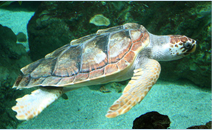
Loggerhead Turtles
(Caretta caretta)
A threatened species can grow to four feet in length (and nearly that in width), weighing from 200-500 lbs.
Get More Information
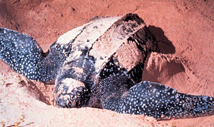
Leatherback Turtles
(Dermochelys coriacea)
A critically endangered species, are the largest sea turtles on the planet, growing up to eight feet long and weighing 500 to 1500 lbs.
Get More Information
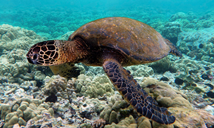
Green Turtles
(chelonia mydas)
An endangered species, grow up to 5 feet long with an average weight of 450 lbs.
Get More Information
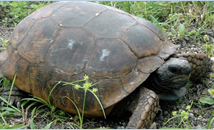
Gopher Tortoises
(G polyphemus)
A threatened species is a keystone species because it digs burrows that provide shelter for hundreds of other species in the area. they can grow to a size ranging from eight to twenty inches.
Get More Information
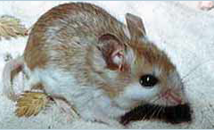
Anastasia Island Beach Mouse
(Peromyscus polionotus phasma)
An endangered species due in part to habitat destruction grows to roughly six inches and resides in the dunes of the beach.
Get More Information
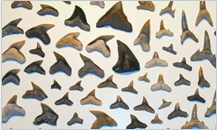
Shark’s teeth
The relics of shark evolution and biology, are often the only part of the shark to survive fossilization, extending back hundreds of millions of years.
Get More Information
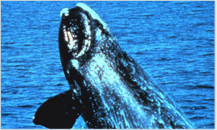
Right Whales
One of Florida’s Northeast coast’s most delightful surprises is the annual migration of the Right Whale to the northeast coast of the state.
Get More Information
